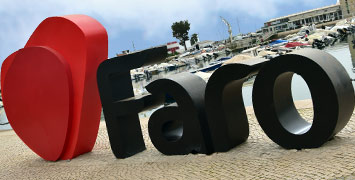Algarve-Tourist.com
The best independent guide to the Algarve
Algarve-Tourist.com
The best independent guide to the Algarve
Faro: The best sights, activities and things to see and do in 2025
Faro is the fascinating capital of the Algarve, which is a delightful mix of its rich history and authentic Portuguese character.
At its heart lies the enchanting walled old quarter (the Cidade Velha), surrounded by impressive baroque architecture and a bustling waterfront overlooking the Parque Natural da Ria Formosa.
Unlike many Algarve resorts, Faro has retained its distinctive Portuguese atmosphere despite the region's boom in tourism. The city's cobbled streets, traditional cafes, and local markets continue to serve residents just as they have for generations.
This genuine Portuguese atmosphere, combined with significant historical sites and rich cultural heritage, makes Faro an engaging destination for both day trips and longer stays while exploring the Algarve.
Related articles: Faro introduction – Day trip to Faro
The Best Sights of Faro: A Brief Overview
Below are Faro's most notable attractions and activities. Detailed descriptions of each sight can be found after the map section.
Cidade Velha (Old Town)
A charming walled historic quarter dating back to Roman times, featuring narrow cobblestone streets, traditional Portuguese architecture, and orange tree-lined plazas. The pretty area contains many of Faro's key monuments and is encircled by well-preserved medieval walls.
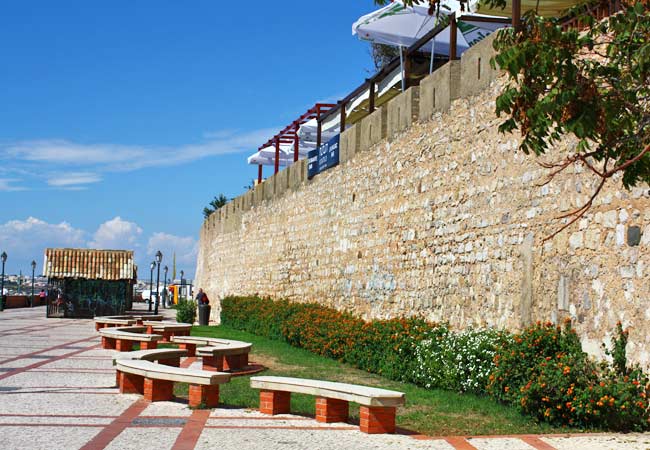
Sé de Faro
A 13th-century cathedral built on the site of a Moorish mosque, blends Gothic, Renaissance, and Baroque styles. Highlights include hand painted Portuguese tiles, a gilded wooden altar, and a bell tower offering panoramic views over the Old Town and Ria Formosa.
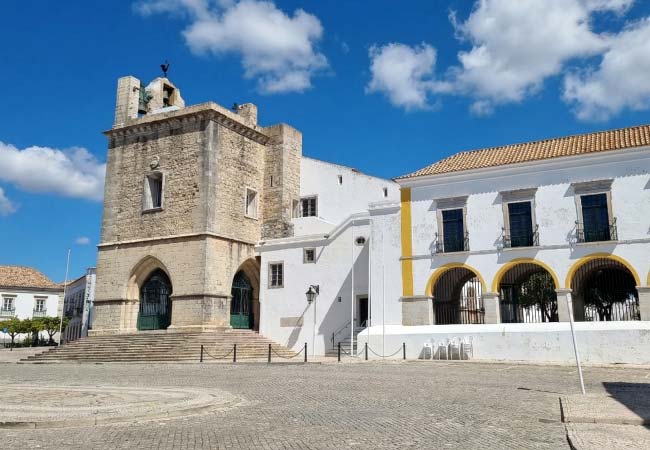
Capela dos Ossos (Bone Chapel)
A fascinating yet macabre chapel within the Igreja do Carmo church, decorated with the bones and skulls of over 1,000 monks. The chapel's walls and ceiling are completely covered in carefully arranged human remains, creating intricate patterns and serving as a memorial to the transient nature of life.
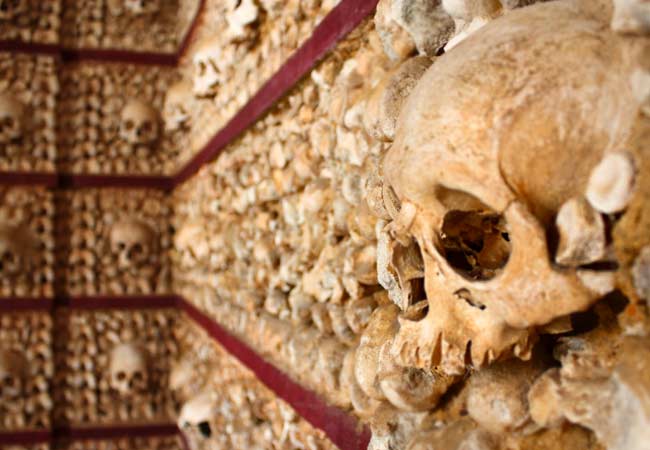
Boat tour of the Ria Formosa Natural Park
An extensive saltwater lagoon system with channels, islands, and salt marshes. Boat tours offer views of diverse wildlife including flamingos, seahorses, and numerous bird species, plus visits to barrier islands and traditional clam-farming communities.
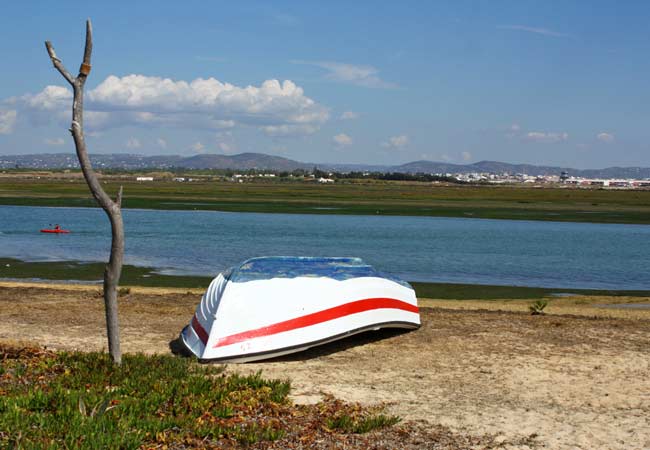
Arco da Vila
A majestic neoclassical archway serving as the main entrance to Faro's Old Town, adorned with a bell tower and stork bird nests.
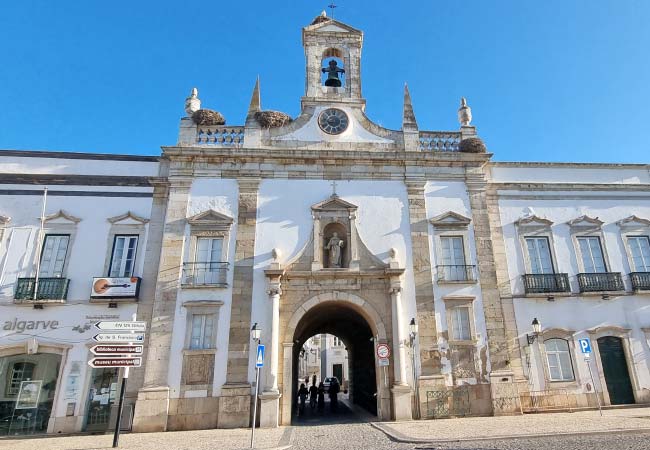
Ilha Deserta (Desert Island)
A pristine, uninhabited barrier island reachable by 35-minute boat ride from Faro. Home to the southernmost point of mainland Portugal and kilometres of unspoiled beaches.
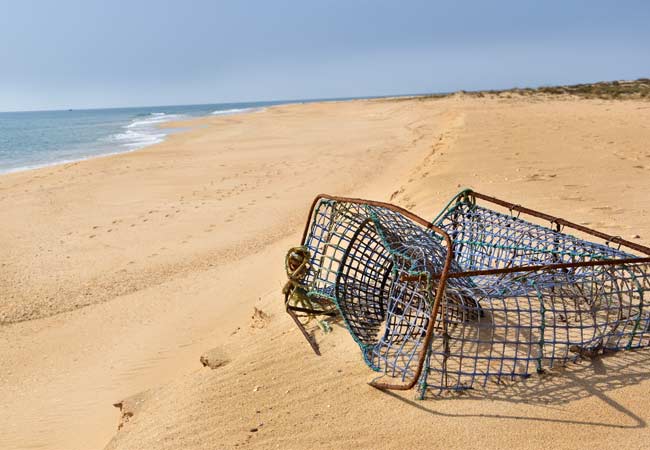
Marina de Faro
The pretty fishing harbour and marina of Faro with waterfront restaurants and cafes.
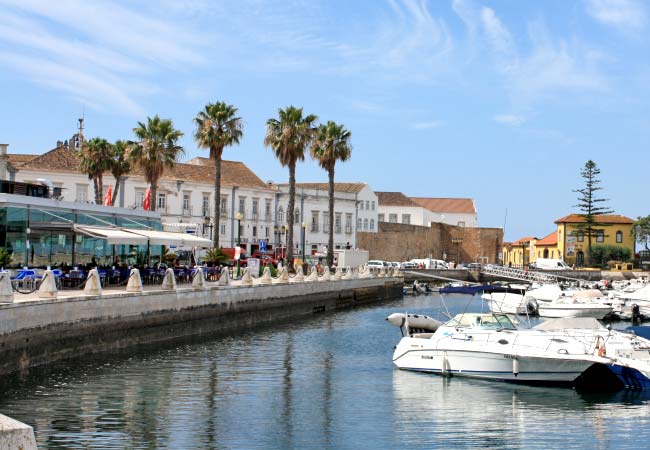
Praia de Faro (Faro Beach)
A dual-sided beach paradise offering both Atlantic waves and calm lagoon waters. This 5km long beach is the most accessible from Faro and served by a regular bus.
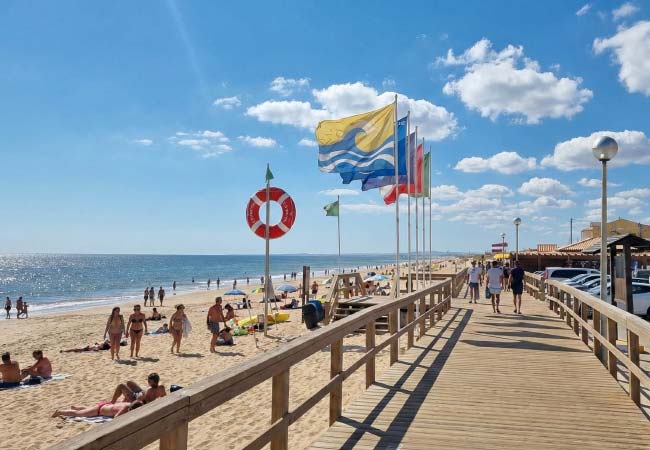
Museu Municipal de Faro
Housed in the beautiful 16th-century Convent of Nossa Senhora da Assunção, this museum exhibits important Roman artifacts, religious art, and paintings.
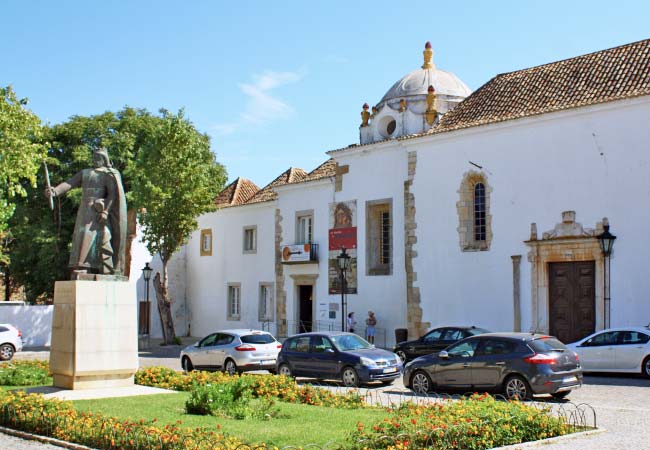
Sights near Faro
Ruínas Romanas de Milreu
An impressive 1st-3rd century Roman villa complex featuring well-preserved mosaics, ancient baths, and a temple, offering fascinating insights into Roman life in the Algarve.
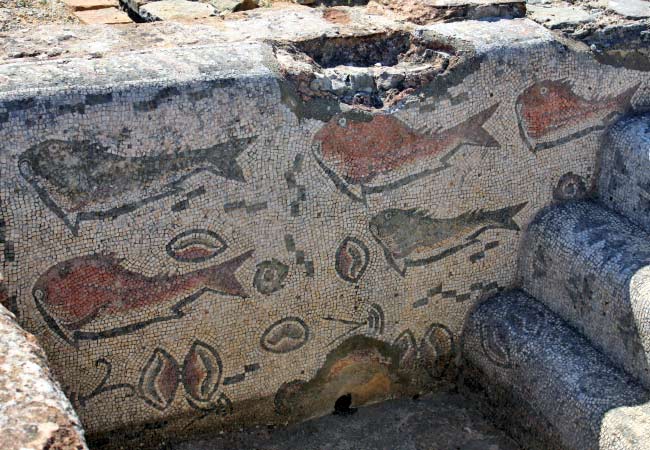
Palácio de Estói
A stunning 19th-century rococo palace with beautiful pink facades, ornate gardens, and lavishly decorated interiors. Now operating as a luxury pousada hotel but open for visitors to explore its grounds and public areas.
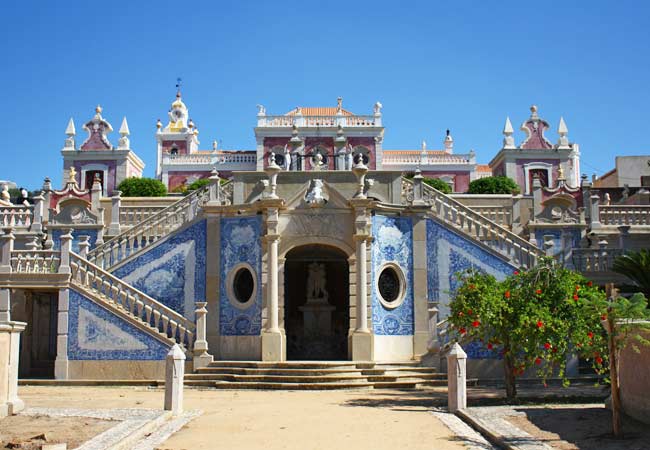
Forum Algarve
The main shopping center just outside of Faro, popular for retail therapy and dining with over 100 stores, a cinema, and numerous restaurants
Cerro do Guilhim
A scenic hiking trail leading to a panoramic viewpoint, offering breathtaking views over Faro
TechSalt's Rock Salt Mine Tour
Located in Loulé, this unique underground salt mine offers guided tours through illuminated tunnels, detailing the mining process and featuring impressive salt crystal formations. (further details can be found here)
Unique activities of Faro
Faro Wine Tasting and Tapas Guided Tour
A culinary experience through three selected local restaurants, combining Portuguese wine tasting with traditional tapas, offering insights into Faro's gastronomic culture and wine heritage. (further details)
Horseback Riding Adventures
Guided horseback rides through either the dramatic landscape of the "Little Grand Canyon" or along the scenic salt flats where flamingos gather, suitable for both beginners and experienced riders. (further details)
Sunset Boat Trip of the Ria Formosa
A romantic evening cruise through the lagoon system, offering spectacular sunset views over the natural park's waters, islands, and wildlife. (further details)
Segway Tour and Birdwatching
A unique combination tour exploring the Ria Formosa Natural Park by Segway while spotting various bird species in their natural habitat. (further details)
The interactive map below shows the location of the main sights within Faro (green markers) and of the surrounding region (yellow markers). Note: Zoom out to see the yellow markers.
The best of the Faro region (yellow): 1) Se cathedral 2) Capela dos Ossos (bone chapel) 3) Arco da Vila 4) Jardim Manuel Bivar 5) City walls 6) Arco do Repouso 7) Igreja do Carmo 8) Museu Municipal de Faro 9) Fishing harbour 10) Faro Municipal Market
The best of the Faro region 1) Parque Natural da Ria Formosa 2) Ilha Deserta 3) Kayak or SUP tour of Ria Formosa 4) Praia de Faro beach 5) Estoi Palace 6) Ilha da Culatra 7) Ruínas Romanas de Milreu 8) Cabo de Santa Maria 9) Forum Algarve (shopping) 10) Ilha do Farol
The following section will provide details of the main sights and activities
The Parque Natural da Ria Formosa
The Ria Formosa Natural Park encompasses over 18,400 hectares of salt water lagoon system formed by barrier islands that protect a labyrinth of channels, marshes, and mudflats. This dynamic environment serves as a vital habitat for wading birds and small marine life, and serves as a crucial stopover for migratory birds between Europe and Africa, with over 20,000 birds visiting during winter months.
The park's barrier islands, including Culatra and Armona, feature pristine beaches and traditional fishing communities where locals still practice sustainable clam and oyster cultivation. The extensive salt pans, some still operational, reflect centuries-old harvesting methods and provide essential habitat for flamingos and spoonbills.
Visitors can explore the park via boat tours through its serpentine channels, observe traditional shellfish harvesting techniques,
Related articles: A boat tour of the Ria Formosa
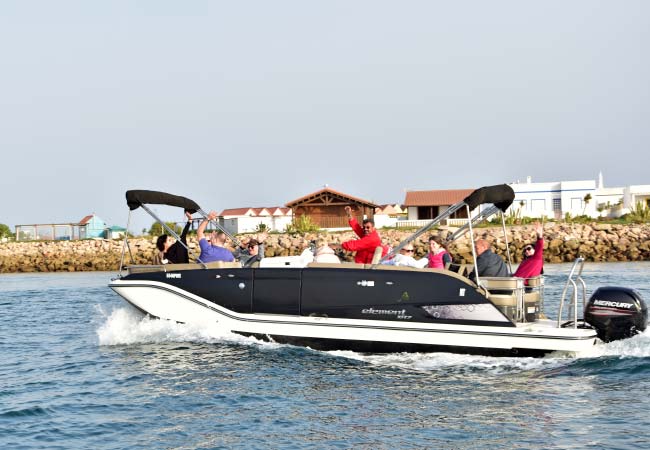
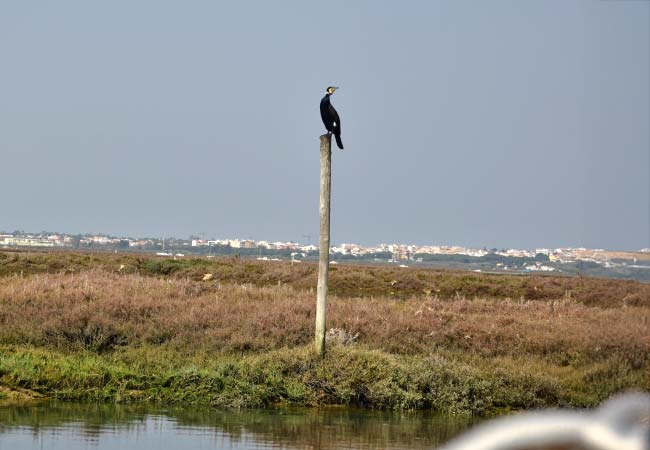
A Cormorant searching for his next fish meal
The Se Cathedral
The Sé Cathedral was originally constructed after the Christian reconquest of 1249, and has survived numerous transformations, including significant reconstruction after the devastating 1755 earthquake.
The cathedral's exterior combines Gothic, Renaissance, and Baroque elements, featuring a distinctive bell tower, from which offer panoramic views over Faro's old town and the Ria Formosa lagoons beyond. Inside, visitors encounter an impressive collection of 18th-century tilework and gilded carved wood altars.
A unique feature of the cathedral is its organ, which is adorned with Chinese motifs – a rare example of Oriental influence in Portuguese religious art.
Other notable features include the chapel of Nossa Senhora dos Prazeres with its magnificent azulejos (traditional Portuguese tiles), and the peaceful cathedral museum housing religious artifacts and sacred art.

The gothic stone tower of the cathedral
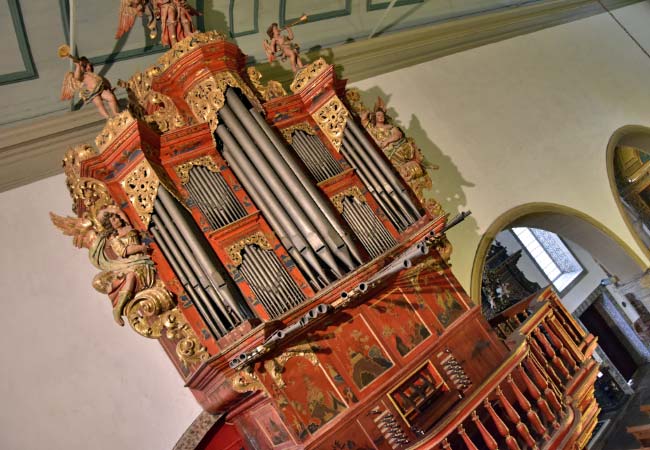
The organ which incorporates Chinese illustrations and patterns
The Capela dos Ossos
The Capela dos Ossos (Bone Chapel) lies in the courtyard of the Igreja do Carmo, and is the Algarve's most macabre yet fascinating monuments. This 19th-century bone chapel was constructed using the skeletal remains of over 1,000 monks whose bones meticulously line the walls and ceiling. The chapel's entrance bears the poignant inscription "Stop here and think of the fate that will befall you" – a reminder of death's inevitability, which is commonly found in bone chapels of Portugal.
The small rectangular chamber features carefully arranged patterns of skulls, tibias, and other human bones, fixed to the walls to create geometrical patterns. This somber space served both as a meditation chamber for Carmelite monks and a practical solution for overcrowded church cemeteries, transforming a burial ground into a powerful reminder of human mortality and spiritual reflection.
The Capela dos Ossos lies within the grounds of the Igreja do Carmo church (7) and the entrance fee is €2
Related articles: The Capela dos Ossos
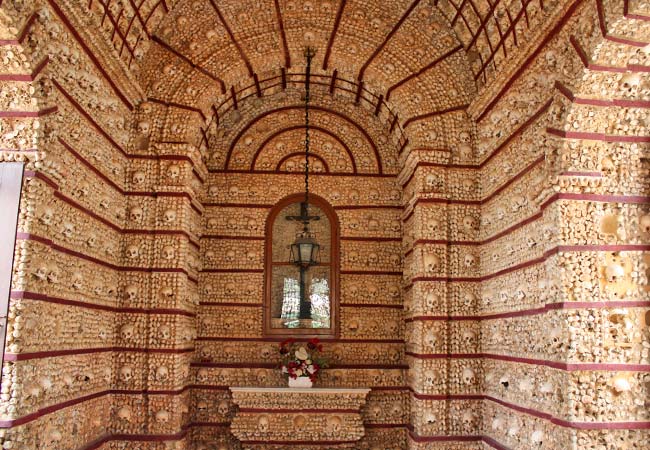
The bones and skulls line every surface of the chapel including the arched roof and pillars
The Ilha Deserta
Ilha Deserta, also known as Ilha da Barreta, is a deserted sand-bar island that shelters the part of the Parque Natural da Ria Formosa. This untouched barrier island stretches for 7 kilometers and includes pristine sand dunes and the isolated Cabo de Santa Maria, the southernmost point of mainland Portugal.
The island's sole structure is the sustainable Estaminé restaurant, which operates on solar power and serves fresh local seafood. The Ilha Deserta protected status helps preserve its rare flora, including maritime daffodils, and provides crucial nesting grounds for protected seabirds such as the Little Tern.
Regular boat services depart from the Cais Portas do Mar, the quay just outside the city walls, with the journey taking approximately 35 minutes. Private water taxis and organized eco-tours are also available, offering flexible departure times and guided nature walks.
Related articles: Faro’s Beaches
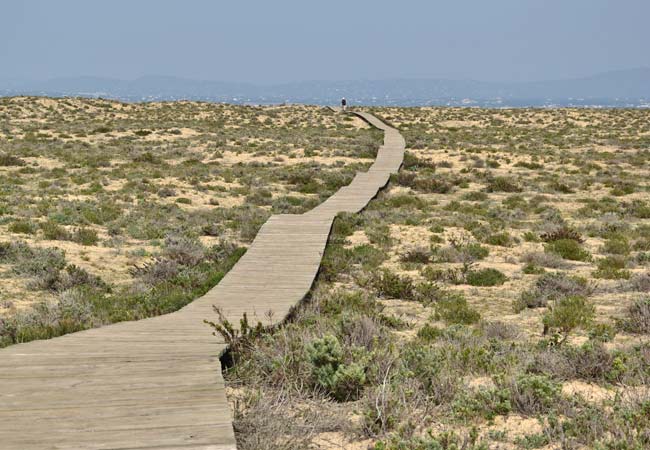
The Cabo de Santa Maria
The Cabo de Santa Maria is the most southerly point of mainland Portugal. This tranquil location would almost be unnoticed if it was not for the monument constructed out of driftwood and sea rubbish. The Cabo de Santa Maria is on the Ilha Deserta, and there is a 2km boardwalk from the harbour to the sandy headland.
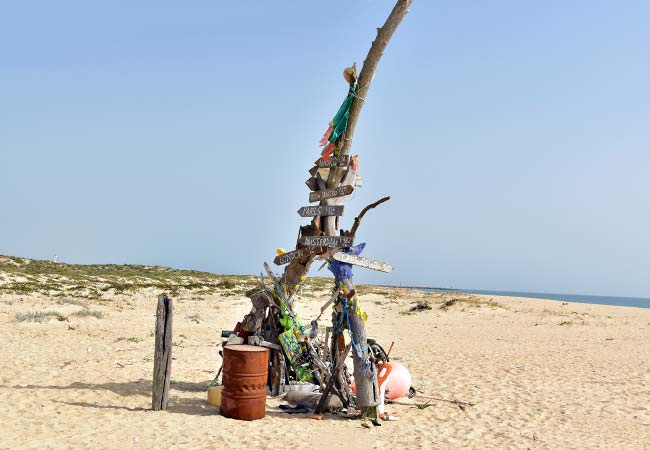
The Cabo de Santa Maria driftwood monument
The Arco da Vila
The Arco da Vila is an elegant neoclassical archway that serves as the grand entrance to Faro's old town. This baroque gateway dates from 1810 and was constructed over the original gateway that was damaged by the 1755 earthquake. The Moorish gateway is visible within the horseshoe arch behind the Arco da Vila and was part of the city walls.
Above the arch is a statue of São Tomás de Aquino (St. Thomas Aquinas) the patron saint of Faro, and at the top is a bell tower. The pinacols and ornate ledges of the arch are a favourite nesting ground of white storks, who build their massive nests atop the monument.
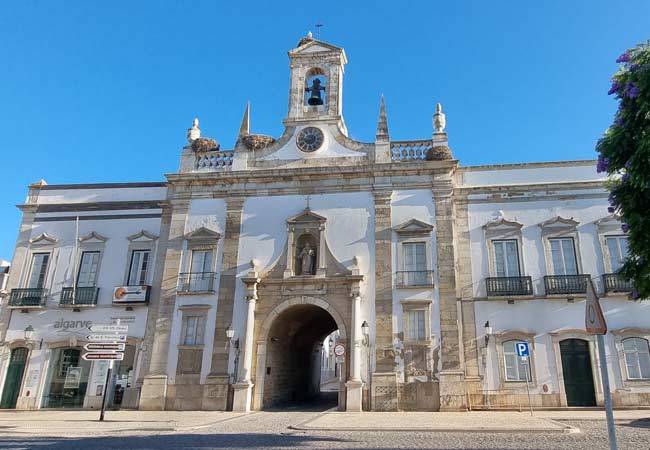
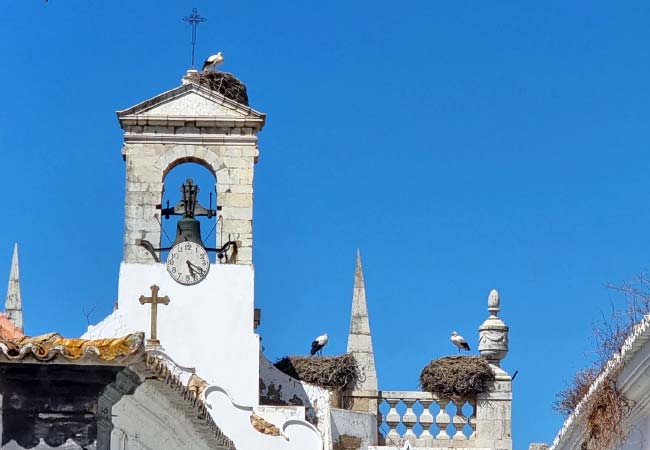
The stork’s huge nests at the top of the Arco da Vila
Museu Municipal de Faro
The Museu Municipal de Faro is housed in the 16th-century Convento Nossa Senhora da Assunção and exhibits the rich archaeological heritage of Portugal's Algarve region. The museum's collection spans from Roman artifacts to medieval Islamic pottery, with notable highlights including intricate Roman mosaics from Ossonoba (ancient Faro) and rare ecclesiastical art. The Renaissance cloister features original Mudéjar tilework, while the former convent's chapter house holds significant religious paintings from the 16th-18th centuries.

The Muralhas de Faro
The ancient city walls of Faro date back to Roman times and substantially reinforced during the Moorish period (9th-11th century). They encircle the Cidade Velha and reflect the city's strategic importance.
The majority of the walls visible today were built during the 17th century War of Restoration (1640-1668), as Portugal fortified its defences while fighting to regain independence from Spanish Habsburg rule.
These formidable defences included three entrances: the neoclassical Arco da Vila, the battle-worn Arco do Repouso, and the Porta Nova leading to the waterfront.
The Arco do Repouso, flanked by distinctive two albarrãs towers (Classical Moorish towers), marks the historic site where King Afonso III's forces breached the city's defences in 1249, ending Moorish rule of Faro.
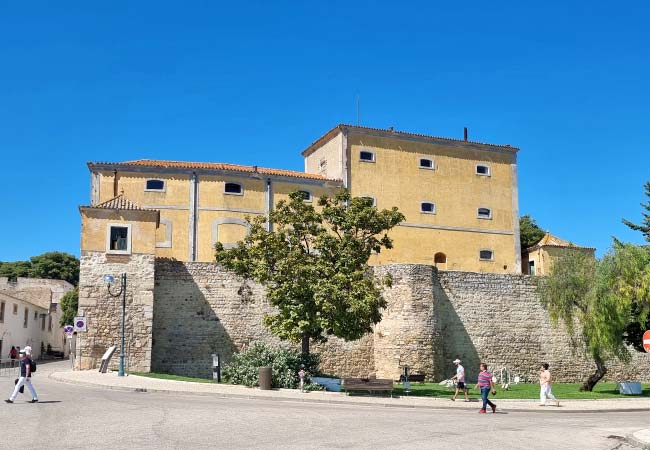
The walls extend around the city and it is a very scenic walk around the perimeter
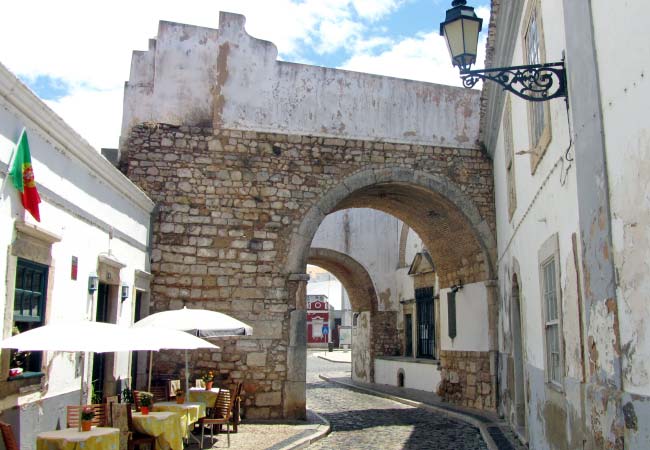
The Arco do Repouso
The Igreja do Carmo
The Igreja do Carmo is an elegant baroque church which contains a beautiful interior of carved wood altars and lavish amounts of gold leaf.
While many visitors rush through the church to the Bone Chapel in the rear courtyard, the Igreja do Carmo 's main sanctuary deserves a look, offering a superb example of Portuguese baroque craftsmanship at its zenith.
Completed in 1719, the church features distinctive twin bell towers that were rebuilt after the devastating 1755 earthquake. Much of the funding of the church came from the wealth (and gold) that was imported from Brazil.
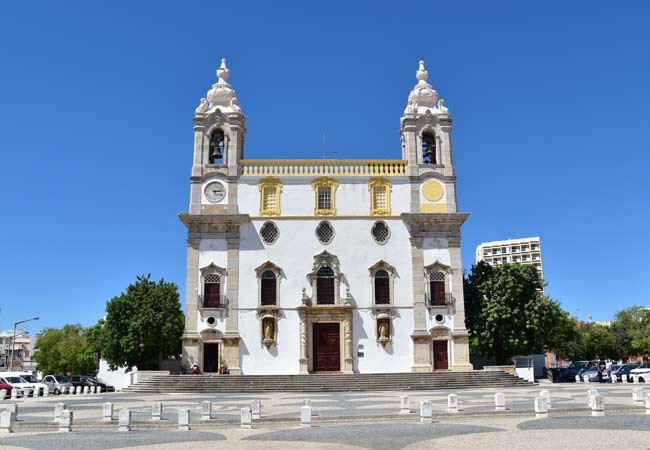
The Centro Ciência Viva do Algarve
The Centro Ciência Viva do Algarve is a science museum designed for children and a great place to visit on a wet day. This interactive science center explores the Algarve's marine ecosystems through hands-on exhibits and aquariums. Visitors can examine local marine species, learn about tidal systems, and understand the region's unique coastal environment.
Sights near Faro
Palácio de Estoi
The Palácio de Estoi, built in 1840 and extensively renovated in the early 1900s, stands as one of the finest examples of Rococo architecture in the Algarve. This pink-hued palace combines neo-Baroque and neo-Rococo elements, featuring ornate frescos, period furniture, and intricate tilework throughout its rooms.
The formal gardens contain classical statuary, decorative tiles, and symmetrical box hedging typical of 19th-century Portuguese estate design. The palace's distinctive blue and white azulejos depict historical scenes and pastoral life, while the chapel displays elaborate gilded woodwork.
Now operating as a pousada (luxury hotel), the palace maintains many of its original architectural features, including the grand double staircase and elaborately decorated ceilings. The Palácio de Estoi lies in the village of Estoi 10km to the north of Faro, and a visit here is often combined with the Ruínas Romanas de Milreu.
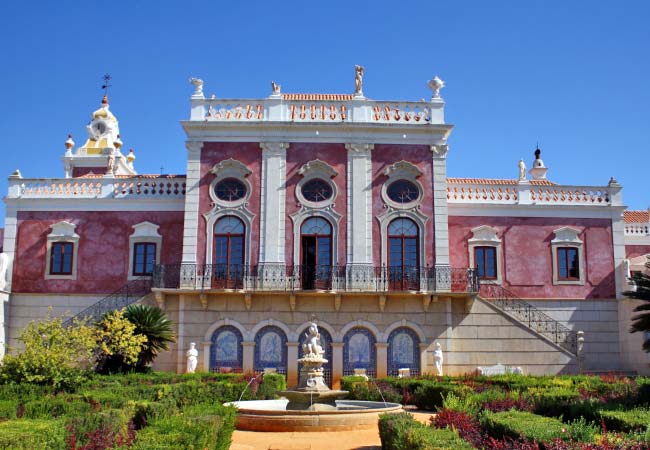
The Ruínas Romanas de Milreu (Estoi)
The Ruínas Romanas de Milreu represents one of the most significant Roman villa complexes in the Algarve. This former luxury residence, dating from the 1st to 4th centuries AD, includes well-preserved thermal baths, living quarters, and an elaborate temple.
The site's exceptional floor mosaics depict marine life in vivid detail, while the temple walls retain their original marble veneers. The villa's sophisticated heating system and extensive agricultural facilities indicate its importance as both a residential and farming estate. The villa is so well preserved because a 13th-century farmhouse was constructed over it, protecting the site.

The marine inspired mosaics in the bathhouse are over 2000 years old
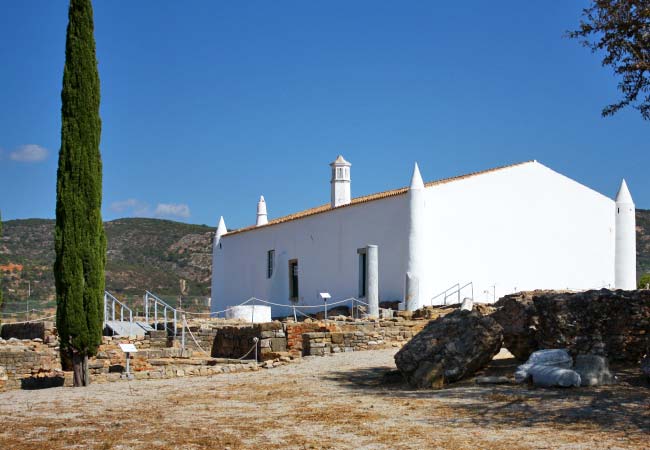
The farmhouse and farm protect much of the ruins
TechSalt's Rock Salt mine
TechSalt's Rock Salt mine near Loulé extends 230 meters below ground, and produces 30,000 tons of salt annually from deposits formed over 200 million years ago during the Triassic period.
Guided tours descend into vast underground chambers, revealing crystalline salt walls and explaining modern mining techniques. The site includes a museum documenting the history of salt extraction in the region and its crucial role in the Algarve's economy and food preservation traditions.
The Forum Algarve
The Forum Algarve is one of the region's largest shopping centers. Housing over 100 retailers across three floors, it includes major international brands, Portuguese fashion outlets, and a diverse food court. The complex incorporates a six-screen cinema and Mediterranean-inspired architecture with covered walkways, fountains, and palm-lined courtyards.
Our most popular guides for Faro and the Algarve
All of our guides to the Algarve





















